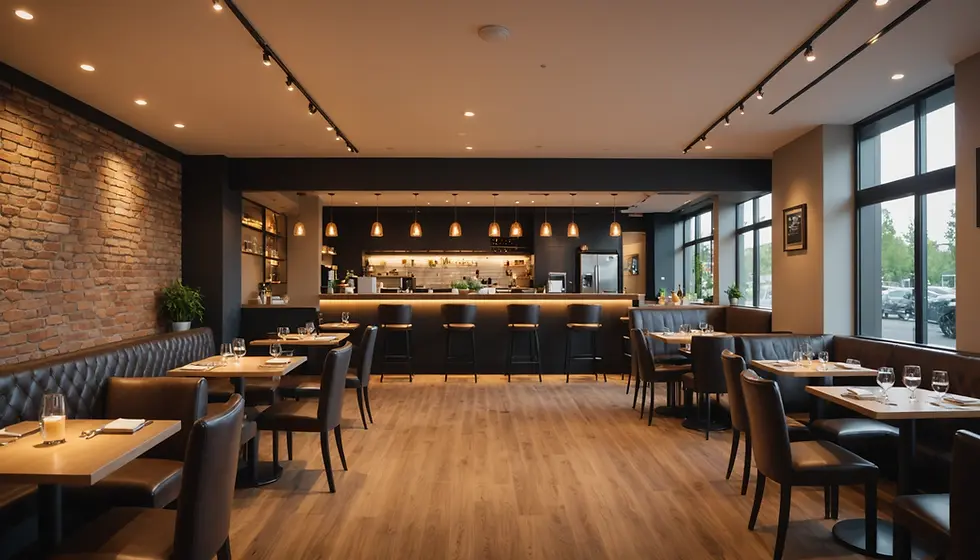Exploring the Effectiveness of Table Reservation Systems for Large Restaurant Chains
- Anu Parmeswaran

- Mar 11
- 4 min read
In the bustling restaurant industry, especially among large chains, managing customer demand is vital. As dining trends shift and customer expectations rise, table reservation systems have become indispensable for improving guest experiences and boosting operational efficiency. This post explores how these systems work, their advantages, and their substantial impact on customer satisfaction and business success.
The Rise of Reservation Systems
While reserving a table isn’t a new concept, the way it is implemented has changed dramatically. Traditionally, customers made reservations over the phone, often leading to confusion and overbookings. Now, large restaurant chains use advanced table reservation systems that simplify the booking process.
These modern systems leverage sophisticated algorithms and real-time data to handle bookings more effectively. For instance, 70% of diners prefer to book their tables online, showing a clear shift towards digital solutions that enhance the dining experience.
Benefits of Implementing a Table Reservation System
1. Improved Customer Experience
One major benefit of adopting a table reservation system is the improved experience for customers. When guests can book their tables in advance, they guarantee a dining spot, which cuts down wait times and enhances satisfaction. For example, a study revealed that restaurants with reservation systems saw a 25% increase in customer retention due to reduced wait times and guaranteed seating.
Additionally, diners can choose their preferred dining times and specific tables, creating a sense of control over their experience.
2. Efficient Table Management
For large restaurant chains, managing tables effectively is crucial. Table reservation systems show real-time availability, enabling staff to optimize seating arrangements and manage customer flow systematically. This organization can reduce table turnover time by up to 15%, helping restaurants maintain maximum capacity during busy hours.
For instance, during peak dinner times, restaurants that use these systems can handle up to 30% more reservations compared to those that rely solely on walk-ins.
3. Valuable Data Insights
Table reservation systems do much more than manage bookings. They provide insights into customer behaviors and preferences, which can inform restaurant chains about menu offerings, promotions, and staffing needs. By analyzing this data, chains can adapt to customer demand.
For example, understanding that 40% of customers frequently order certain dishes during specific times can help restaurants adjust their menus accordingly, enhancing customer satisfaction and boosting sales.
4. Reducing No-Shows
No-shows can heavily impact a restaurant’s revenue, especially for chains that operate with tight margins. Table reservation systems often include features like reminder messages and deposit requirements that significantly reduce no-show rates.
Data shows that restaurants utilizing reminder systems can decrease no-shows by up to 20%. This leads to more predictable revenue and better table management.
5. Customization and Personalization
Today’s consumers value personalized experiences. Table reservation systems can help restaurants offer customized services, such as acknowledging special occasions like birthdays or anniversaries.
For example, when a guest mentions a special occasion during the reservation, the restaurant can prepare personalized touches, like complimentary desserts. Such thoughtful gestures can increase customer loyalty and inspire positive recommendations.
Challenges and Considerations
Despite the clear benefits, restaurants must address several challenges when implementing table reservation systems.
1. Technological Adaptation
Adopting a new reservation system necessitates staff training and a willingness to embrace new technologies. This transition can face resistance, especially in larger establishments that have relied on traditional methods for years.
Providing comprehensive training and ongoing support is crucial to ensure a smooth transition and maximize the benefits of the new system.
2. Cost Implications
Investing in a table reservation system comes with initial costs and ongoing maintenance fees. Large restaurant chains need to evaluate different systems, considering which features they require and the expected return on investment.
For instance, a system may cost between $200 to $1,000 per month, so understanding how it fits within the overall budget and can improve operations is vital.
3. Integration with Existing Systems
Many large chains already use various management systems for different functions, such as inventory and customer relationship management. It is essential to select a table reservation system that integrates seamlessly with existing platforms, enhancing overall efficiency rather than complicating operations.
Future Trends in Table Reservation Systems
As the restaurant industry continues to evolve, table reservation systems will also transform. Here are a few anticipated trends:
1. Artificial Intelligence and Machine Learning
AI and machine learning will increasingly feature in reservation systems, helping them adapt to customer behavior over time. This means providing even more precise and personalized service, potentially increasing customer satisfaction rates.
2. Mobile Optimization
With more customers using smartphones, ensuring reservation systems work well on mobile devices is key. Research shows that 50% of reservations are made through mobile devices, emphasizing the need for convenient, mobile-friendly options.
3. Integration of Contactless Options
In a post-pandemic environment, the demand for contactless services has grown. Reservation systems that offer contactless check-in and payment options are becoming increasingly important, aligning with consumer preferences for safety and convenience.
The Bottom Line
Table reservation systems present numerous benefits for large restaurant chains, from enhancing customer satisfaction to streamlining operations and providing valuable insights. While challenges exist, the potential for increased efficiency and revenue makes these systems a sound investment.
As technology evolves, the future of table reservation systems looks bright. Adopting these tools not only meets current customer preferences but also prepares large restaurant chains for ongoing competition.
Whether your chain is already using a reservation system or is considering one, recognizing its considerable potential can lead to significant gains in both customer satisfaction and overall success.
Enjoy a 45 - day free trial with no Card details required







Comments